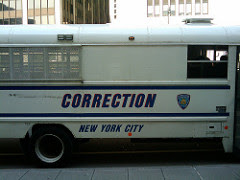This decision relates to a conditional withdrawal of an appeal and a request for reimbursement of the appeal fee since no preliminary opinion was issued by the board and no date for oral proceedings was set. Problem was however that the applicant (appellant) did not pay the renewal fee that was due earlier (31 August 2015) than the withdrawal of the appeal was submitted (19 February 2016). Interestingly, this decision was published straight away, on 25 February 2016, while the applicant could still pay the renewal fee with a 50% surcharge until 29 February 2016. Of course this would not have been (money-) wise because the return of the appeal fee (1240 euro at the time; 50% being 620 euro) would not outweigh the costs for the renewal fee plus surcharge (2340 euro). To be on the safe side, the board could have waited until after 1 March 2016, but they did not.
The conclusion is that one cannot get a reimbursement of the appeal fee when an application is no longer pending. The appeal procedure in this case has ended due to the loss of rights. The declaration regarding the withdrawal of the appeal cannot be effective.
Summary of Facts and Submissions
I. The appeal lies against the decision of the Examining Division dated 17 December 2012. It was filed on 13 February 2013. A statement of grounds was submitted on 24 April 2013.
II. The renewal fee for the 12**(th) year fell due on 31 August 2015 and was not paid by that date.
III. On 18 February 2016 the Appellant submitted a declaration stating: "The Appellant ... hereby withdraws their Appeal against the decision of the Examining Division upon the condition that the withdrawal is received in time to qualify for at least a 50 % refund of the appeal fee."
IV. The Board has neither issued a preliminary opinion nor set a date for oral proceedings.
Reasons for the Decision
1. Procedural declarations may be made with the proviso that certain conditions are met, as long as a case is already pending (J 16/94, referring to Article 108, first sentence, and Rule 64(b) EPC 1973; T 854/02, Reasons 2.1) and these conditions do not concern facts outside the proceedings (T 502/02, Reasons 1, referring to Articles 21 and 111(1), second sentence, EPC). Thus, whereas a conditional appeal is not possible, the conditional withdrawal of an appeal may be valid (T 6/92, Reasons 2 and 3; T 304/99, Reasons 3.1.).
2. The withdrawal of an appeal can, though, only take effect if the appeal is still pending.
3. This is not the case here. Since the renewal fee for the 12**(th) year was not paid in due time, the application is deemed to be withdrawn in accordance with Article 86(1), 3rd sentence, EPC. Such a loss of rights also affects the appeal proceedings. The fact that the Appellant might still reverse the loss of rights by paying the renewal fee plus an additional fee (50 % of the renewal fee) within 6 months after the due date, does not change the current situation, since no such fees have been received by the Office. Thus, at present the application is no longer pending and hence the appeal proceedings have also ended due to the loss of rights. Therefore, the declaration regarding the withdrawal of the appeal cannot be effective.
4. In consequence, the prerequisites of Rule 103(2) EPC are not met. Thus, no reimbursement of the appeal fee or parts of it is possible for as long as the renewal fee plus the additional fee have not been paid.
Order
For these reasons it is decided that:
The request for a (partial) reimbursement of the appeal fee, dated 18 February 2016, is refused.
This decision has European Case Law Identifier: ECLI:EP:BA:2016:T140213.20160225 and can be found here. The file wrapper can be found here.Photo "Flower" by Jeremy
Knight via Flickr under a CC-By license (no changes).














